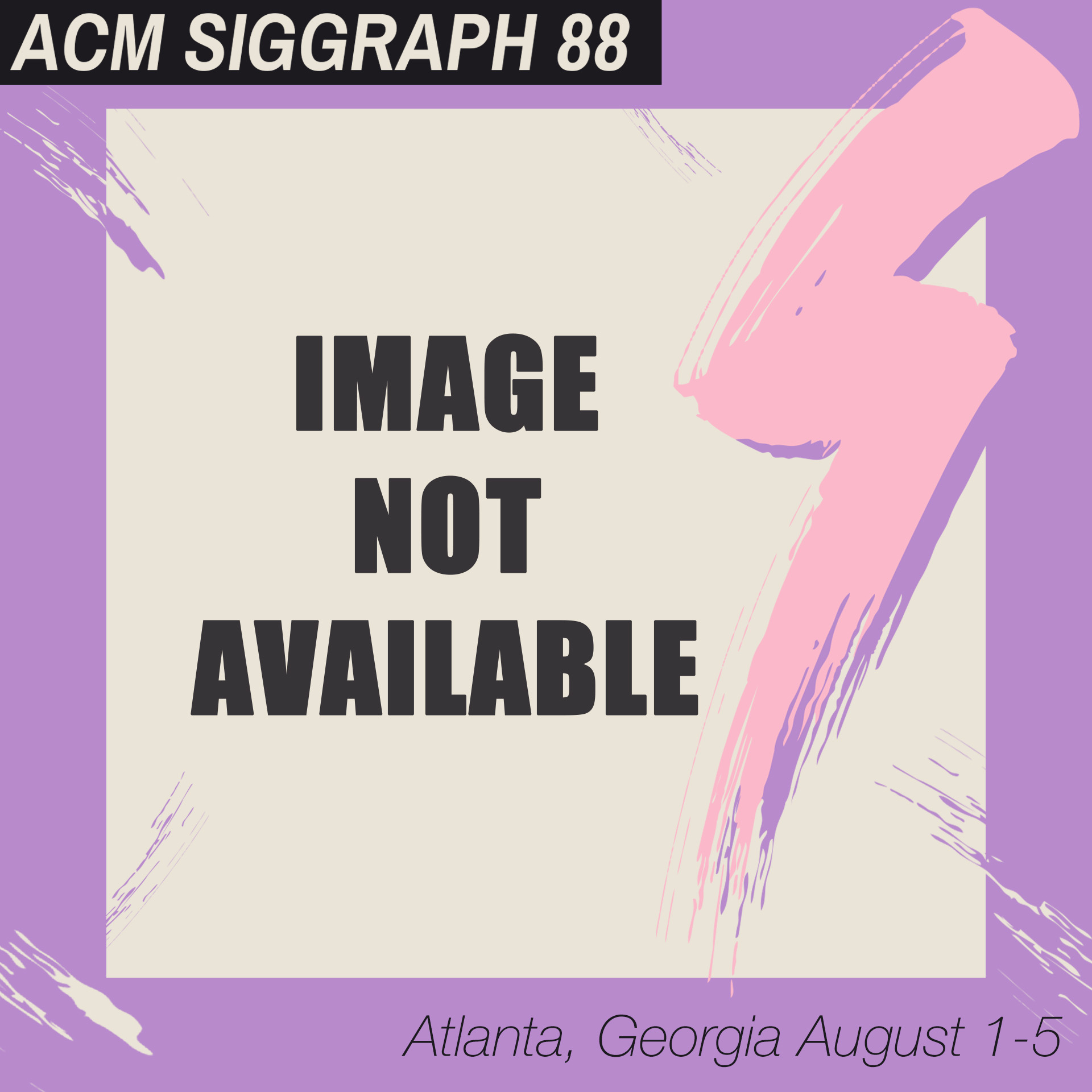“Motion interpolation by optimal control” by Shapiro Brotman and Netravali
Conference:
Type(s):
Title:
- Motion interpolation by optimal control
Presenter(s)/Author(s):
Abstract:
Motion Interpolation, which arises in many situations such as Keyframe Animation, is the synthesis of a sequence of images portraying continuous motion by interpolating between a set of keyframes. If the keyframes are specified by parameters of moving objects at several instants of time, (e.g., position, orientation, velocity) then the goal is to find their values at the intermediate instants of time. Previous approaches to this problem have been to construct these intermediate, or in-between, frames by interpolating each of the motion parameters independently. This often produces unnatural motion since the physics of the problem is not considered and each parameter is obtained independently. Our approach models the motion of objects and their environment by differential equations obtained from classical mechanics. In order to satisfy the constraints imposed by the keyframes we apply external control. We show how smooth and natural looking interpolations can be obtained by minimizing a combination of the control energy and the roughness of the trajectory of the objects in 3D-space. A general formulation is presented which allows several trade-offs between various parameters that control motion. Although optimal parameter values resulting in the best subjectively looking motion are not yet known, our simulations have produced smooth and natural motion that is subjectively better than that produced by other interpolation methods, such as the cubic splines.
References:
1. Magnenat-Thalmann, N. and Thalmann, D., “Computer Animation: Theory and Practice”, Springer-Verlag,. 1985.
2. Stern, Garland, “Bbob – a System for 3-D Key-Frame Figures Animation”, S1GGRAPH’83, Tutorial Notes on Introduction to Computer Animation, pp. 240-243.
3. Sturman, David, “Interactive Keyframe Animation of 3-D Articulated Models”, Graphics Interface, ’84, pp. 35-40.
4. Kochanek, Doris H. U. and Barrels, Richard H., “Interpolating Splines for Keyframe Animation”, Graphics Interface ’84, pp. 41-42.
5. Shoemake, Ken., “Animating Rotation with Quaternion Curves”, SIGGRAPH’85, Computer Graphics 19 (3), pp. 245-254.
6. Armstrong, W. W. and Green, Mark, “The Dynamics of Articulated Rigid Bodies for the Purposes of Animation”, Graphics Interface, ’85, Montreal, pp. 407-416.
7. Wilhelms, Jane and Barsky, Brian A., “‘Using Dynamics for the Animation of Articulated Bodies Such As Humans and Robots”, Graphics Interface ’85, Montreal, pp. 407-416.
8. Raibert, Marc H., et. al., “Experiments in Balance with a 3-D One-Legged Hopping Machine”, The International Journal of Robotics Research, Vol. 3, No. 2, 1984, pp. 75-92.
9. Isaacs Paul M. and Cohen, Michael F., “Controlling Dynamics Simulation with Kinematic Constraints, Behavior Functions and Inverse Dynamics”, SIGGRAPH’87, Computer Graphics 21 (4), pp. 215-224.
10. Bryson, A. E. and Ho, Y., “Applied Optimal Control: Optimization, Estimation, and Control”, Hemisphere Publishing Corp., 1975.
11. Goldstein, H., “Classical Mechanics”, Addison-Wesley, Inc. 1951.
12. Halfman, R. L., “Dynamics”, Addison-Wesley, Inc. 1962.




